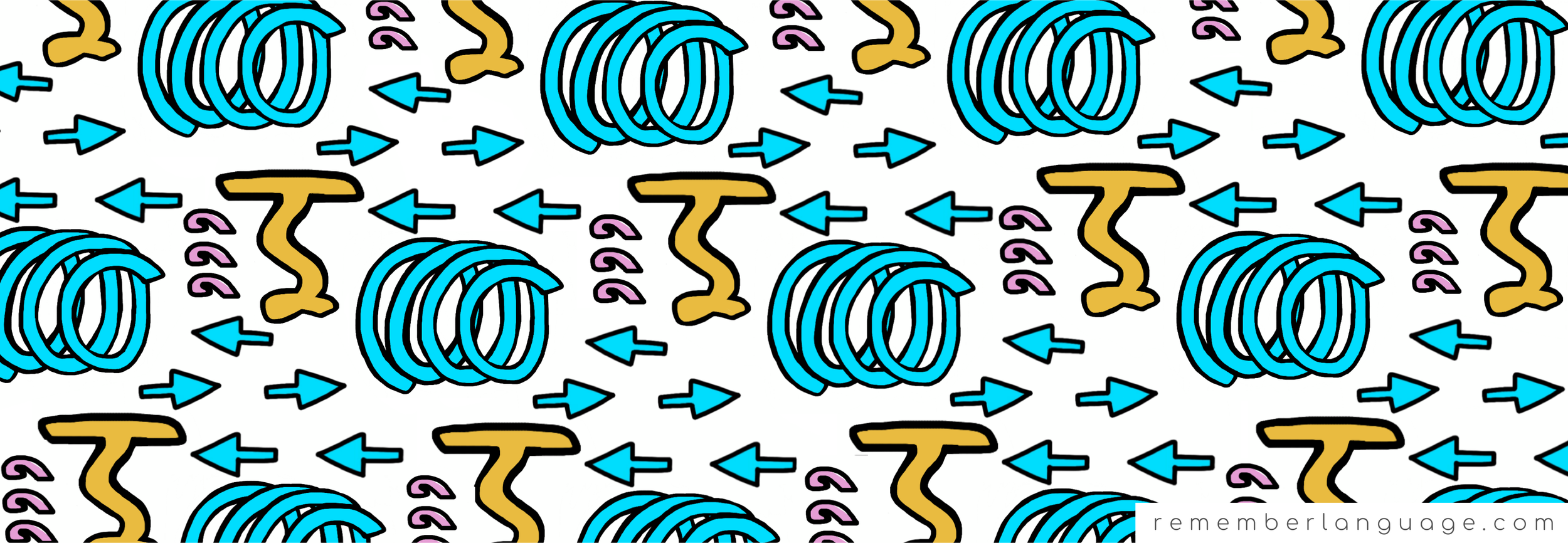[SKT] VOWELS: CREATING CONTRACTED FORMS
VOWEL FORMS: FULL + CONTRACTED
Sanskrit vowels can present themselves in two different forms: full forms and contracted forms.
We're going to talk about what the forms look like, when to use each form, and how to get from one to the other.
WHAT THEY LOOK LIKE
The full forms look pretty standard in terms of how much space they occupy within a word. They look like actual letters from an alphabet.
The contracted forms are closer in appearance to diacritical marks, if that's something you're familiar with. Think small squiggles above or below letters. They look more like an afterthought, wedged between other characters.
Each contracted form corresponds to a full form.
In the top row of figure 1, we have the full vowels. Underneath, are the contracted versions.
Fig. 1 Vowels: full forms (top row) and contracted forms (bottom row)
"N/A"
How come the first vowel in figure 1 doesn't have a contracted version? Because default vowels. Read more about that here.
WHEN TO USE EACH FORM
If a word begins with a vowel, we use the full form.
If a vowel appears in the middle – or end – of a word, we use the contracted form.
Fig. 2 Placement of vowels within words: full forms appearing at the beginning of a word, contracted forms appearing in the middle/end of a word
HOW TO CREATE CONTRACTED FORMS
If you've been getting amongst the alphabet in the context of text-books or grammar tables, you'll be most familiar with the full forms of the vowels.
So we'll start there, and work our way towards the contracted forms.
Some of the vowels convert EASILY into contracted forms.
Some LESS EASILY.
And some REVERSE-EASILY.
FIRST GROUP: EASILY
These are the A-team vowels. “A” being "अ” in Sanskrit.
All of these vowels have this shape (अ) at the core of their structure.
HOW TO MAKE THEM
To make contracted versions of these vowels, simply remove the अ.
That's it.
The lines or squiggles left behind are the contracted forms ready to be placed in a word.
Fig. 3 Transforming full vowel forms into contracted vowel forms, first group of vowels
SECOND GROUP: LESS EASILY
These vowels have two main shapes: "उ” and "ए”.
One of them loosely resembles the number 3; the other looks like it's ready for the catwalk.
HOW TO MAKE THEM
Making contracted versions of these vowels is less of a control-x exercise and more of a I-can-kind-of-see-how-we-got-here exercise.
The transformation involves using components of the full forms and shuffling them around a bit.
The rounded parts of the "3"-looking vowels can be extracted and repurposed into smaller forms. The shrunken forms rest below the word.
The stems on the leggy vowels can be flipped vertically, resting above the word.
Fig. 4 Transforming full vowel forms into contracted vowel forms, second group of vowels
THIRD GROUP: REVERSE-EASILY
These vowels look like broken slinkies: "इ” and "ई”.
And they're just as easily untangled into contracted versions. You've tried to untangle a slinky, right?
HOW TO MAKE THEM
Both vowels unravel into vertical lines, with hooks on their tops.
The first hook goes right; the second hook goes left. Seems straightforward.
Fig. 5 Transforming full vowel forms into contracted vowel forms, third group of vowels
THE COMPLICATED PART
Because of the elongated hook shape on the first contracted vowel, it insists on slinkying its way into words.
And we all know what happens when a slinky tries to get into a word. It's like watching science fall down the stairs.
Something about simple harmonic motion and restoring force. Which sends as much push or pull in the direction the slinky isn't going as the direction it is (going).
For Sanskrit word structure, this results in the contracted vowel being placed before the consonant that it's following.
Like spelling "pen" as "epn". You still pronounce it as "pen", but you spell it weirdly. Because of the slinky thing.
AND BACK TO NORMALITY
The second contracted vowel inherits an easy-access hook, allowing it to be picked up and placed within a word... in the position following the consonant. Like all the other well-adjusted sounds and letters that participate in words. Sequentially.
Fig. 6 Placement of contracted vowels within words: left vowel preceding consonant (unusual), right vowel following consonant (standard)
OTHER VOWELS
There are a few other vowels kicking around in Sanskrit, but these are the main players.









